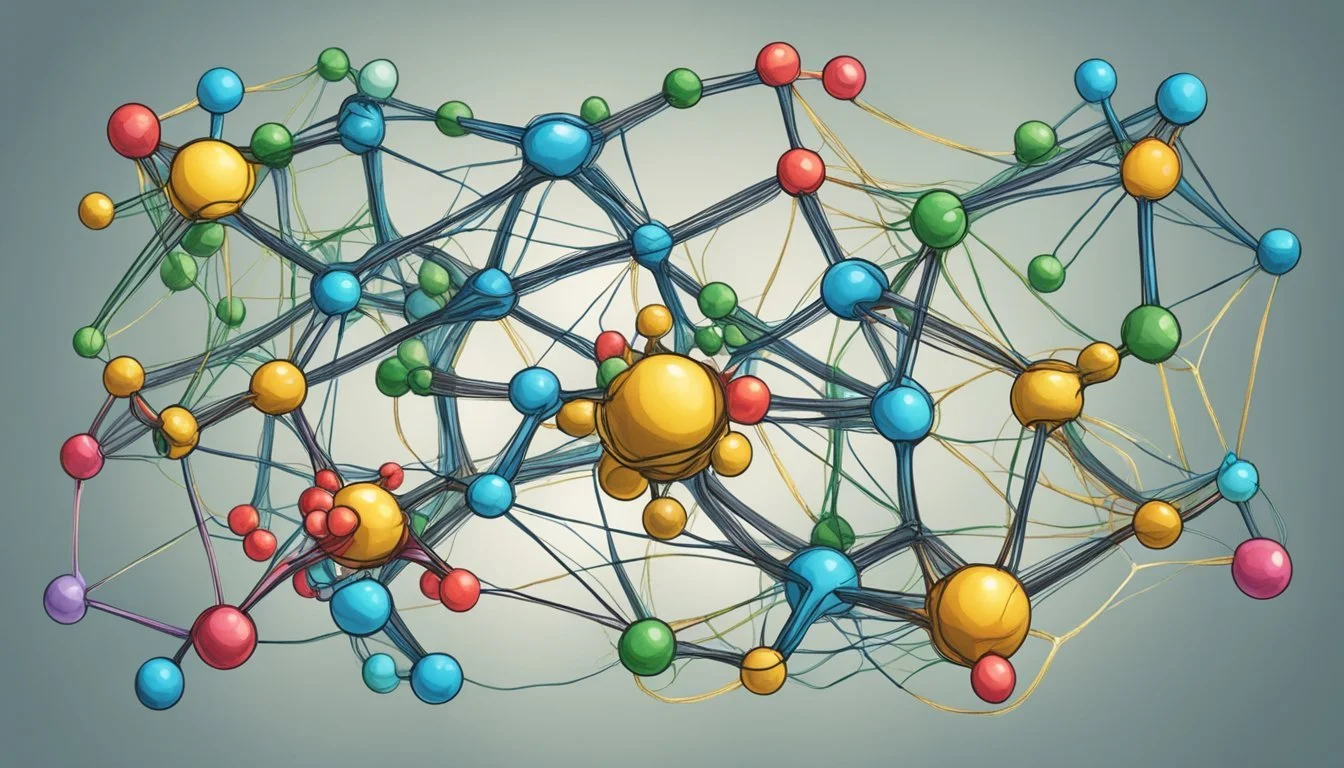Understanding the Neurochemistry Behind Unhealthy Attachments
Toxic relationships can have a profound impact on our brain chemistry, particularly through the release of dopamine. This neurotransmitter, associated with pleasure and reward, plays a key role in the addictive nature of unhealthy partnerships. The intermittent reinforcement often present in toxic relationships can lead to heightened dopamine release, creating a powerful and often difficult-to-break bond.
The brain's reward circuit becomes activated in these situations, firing pleasurable messages that can override logical thinking. This neurobiological response occurs at a subcortical level, engaging the emotional part of the brain rather than the rational, decision-making areas. As a result, individuals may find themselves drawn back to harmful relationships despite recognizing their negative aspects.
Breaking free from toxic relationships requires understanding these neurochemical processes and seeking appropriate support. Therapy, particularly modalities like EMDR, can be crucial in helping individuals recognize manipulation tactics and cultivate independence. By addressing the underlying neurobiological factors, people can begin to rewire their brain's response patterns and work towards healthier relationship dynamics.
Understanding Toxic Relationships
Toxic relationships involve harmful patterns of behavior that damage emotional well-being. These dynamics can create addictive cycles fueled by brain chemistry and psychological factors.
Defining Toxic Relationships
Toxic relationships are characterized by patterns of emotional abuse, manipulation, and control. Key signs include:
• Constant criticism or belittling • Gaslighting and distortion of reality
• Unpredictable mood swings • Excessive jealousy or possessiveness • Lack of respect for boundaries
These relationships often involve a power imbalance, with one partner dominating or controlling the other. The toxic partner may use guilt, threats, or intermittent affection to maintain control. This creates an unstable dynamic that can be difficult to recognize and leave.
Psychological Effects of Toxicity
Prolonged exposure to toxic relationship dynamics can have severe psychological impacts:
• Chronic stress and anxiety • Depression and low self-esteem
• Trust issues and fear of intimacy • Hypervigilance and emotional instability • Trauma responses like dissociation
Victims may experience cognitive dissonance, struggling to reconcile abusive behavior with positive memories. This mental conflict makes it challenging to leave toxic situations. Over time, toxic relationships can erode self-worth and alter one's perception of healthy interactions.
Dopamine's Role in Relationships
Dopamine, a key neurotransmitter, plays a complex role in toxic relationship cycles. It's associated with:
• Reward and pleasure sensations • Motivation and goal-directed behavior • Emotional bonding and attachment
In toxic relationships, intermittent positive reinforcement triggers dopamine spikes. The unpredictable nature of affection and approval creates a powerful addictive cycle. This neurochemical response can mimic substance addiction, making it difficult to break free from toxic patterns.
Negative interactions in toxic relationships also impact dopamine. Chronic stress can disrupt normal dopamine function, potentially leading to depression and anxiety. This neurochemical imbalance further complicates the process of leaving toxic situations.
Identifying Toxic Relationship Dynamics
Toxic relationships often involve subtle yet harmful patterns that can be difficult to recognize. These dynamics can have profound impacts on emotional wellbeing and self-esteem.
Signs of Emotional Manipulation
Emotional manipulation is a hallmark of toxic relationships. Gaslighting is a common tactic where the manipulator denies or distorts reality, making the victim question their own perceptions.
Love-bombing involves overwhelming the partner with affection and attention early on, only to withdraw it later. This creates an addictive cycle of highs and lows.
Guilt-tripping and silent treatment are other manipulative behaviors used to control and punish. The manipulator may play the victim or use passive-aggressive tactics to avoid taking responsibility.
Patterns of Abuse and Neglect
Abuse in relationships can take many forms beyond physical violence. Verbal abuse includes constant criticism, name-calling, and humiliation. Emotional abuse erodes self-worth through tactics like threats and intimidation.
Financial abuse involves controlling money and resources to create dependence. Digital abuse uses technology to monitor, harass, or control a partner.
Neglect is a form of abuse characterized by failure to meet a partner's basic emotional needs. This can include withholding affection, support, or attention as punishment.
Impact of Narcissistic Abuse
Narcissistic abuse stems from a partner with narcissistic personality traits. They often create a false image of superiority while devaluing their partner.
Victims may experience a loss of identity as they're forced to cater to the narcissist's needs and ego. Gaslighting is common, causing victims to doubt their own reality.
The narcissist may alternate between idealization and devaluation, creating an addictive trauma bond. This cycle keeps the victim hopeful for the return of the "good" times.
Long-term effects can include anxiety, depression, and complex PTSD. Regaining self-esteem and trust often requires professional support after leaving the relationship.
The Chemistry of Attachment and Detachment
Attachment and detachment in relationships involve complex neurochemical processes. Dopamine, oxytocin, and other neurotransmitters play crucial roles in bonding, addiction-like behaviors, and the pain of separation.
Understanding Attachment Theories
Attachment theories explain how individuals form emotional bonds. Secure attachment develops when caregivers consistently meet a child's needs. Insecure attachment patterns emerge from inconsistent or neglectful care.
These early experiences shape adult relationship behaviors. Securely attached adults form healthy bonds. Those with insecure attachment may struggle with intimacy or fear abandonment.
Neuroscience reveals that attachment styles influence brain structure and function. Secure individuals show balanced activity in emotion-regulating areas. Insecure attachment correlates with heightened amygdala reactivity.
Addiction to Relationship Dynamics
Toxic relationships can become addictive due to neurochemical processes similar to drug addiction. The cycle of tension, release, and reconciliation triggers dopamine surges.
Love bombing, an manipulation tactic, floods the brain with feel-good chemicals. This creates a euphoric high, followed by emotional crashes when affection is withdrawn.
The intermittent reinforcement of affection in toxic relationships strengthens the addiction. The brain craves the next "hit" of positive attention, perpetuating harmful patterns.
Breaking free from toxic attachments often involves withdrawal symptoms. The brain must readjust to lower dopamine levels, leading to temporary emotional distress.
The Role of Dopamine in Attachment
Dopamine, a key neurotransmitter, drives reward-seeking behaviors crucial for attachment. It motivates individuals to seek out and maintain social bonds.
In early attachment, dopamine reinforces the infant-caregiver relationship. Positive interactions trigger dopamine release, encouraging repetition of bonding behaviors.
Romantic love activates the brain's dopamine-rich reward centers. This creates feelings of euphoria and focused attention on the partner.
Dopamine's role extends beyond initial attraction. It helps maintain long-term bonds by associating the partner with reward and motivation.
In toxic relationships, dopamine can perpetuate unhealthy dynamics. The brain may become sensitized to the highs and lows, creating a cycle of craving and temporary satisfaction.
Breaking the Cycle of Toxicity
Breaking free from toxic relationships requires self-awareness, support, and concrete action steps. Recognizing patterns, setting boundaries, and seeking professional help are key to recovery and growth.
Setting Healthy Boundaries
Establishing clear boundaries is crucial for breaking toxic relationship cycles. Boundaries protect emotional well-being and foster self-respect. Start by identifying personal limits and communicating them assertively.
Be consistent in enforcing boundaries. This may involve saying "no" to unreasonable demands or limiting contact with toxic individuals. Remember, healthy relationships respect boundaries.
Practice self-care to reinforce boundaries. Prioritize activities that promote mental and physical health. This builds resilience and reduces vulnerability to toxic dynamics.
Therapeutic Approaches to Recovery
Professional therapy can be invaluable in healing from toxic relationships. Cognitive Behavioral Therapy (CBT) is particularly effective in addressing negative thought patterns and behaviors.
CBT helps individuals recognize harmful relationship dynamics and develop healthier coping strategies. It also aids in rebuilding self-esteem often damaged by emotional abuse.
Group therapy provides a supportive environment to share experiences and learn from others. It can reduce feelings of isolation common among those leaving toxic relationships.
EMDR (Eye Movement Desensitization and Reprocessing) therapy may help process trauma associated with toxic relationships. It can alleviate symptoms of anxiety and depression often linked to these experiences.
Learning from Past Relationships
Reflection on past relationships is essential for personal growth and avoiding future toxic patterns. Identify red flags and behaviors that contributed to unhealthy dynamics.
Develop self-awareness by examining personal triggers and reactions. Understanding these can help prevent falling into similar situations in the future.
Practice self-compassion during this process. Recognize that healing takes time and setbacks are normal. Celebrate small victories in establishing healthier relationship patterns.
Seek support from trusted friends or support groups. Sharing experiences can provide valuable insights and emotional support during the recovery journey.
Maintaining Positive Relationship Habits
Positive habits form the foundation of healthy relationships. They foster connection, growth, and mutual satisfaction between partners.
Effective Communication and Trust
Open and honest communication builds trust. Partners should express thoughts and feelings clearly without judgment. Active listening involves giving full attention and seeking to understand.
Use "I" statements to express needs without blame. For example, "I feel hurt when..." instead of "You always..."
Regular check-ins help address issues early. Set aside time weekly to discuss relationship concerns and celebrate successes.
Boundaries are crucial. Clearly communicate personal limits and respect those of your partner.
Trust grows through consistent actions. Follow through on commitments and be reliable. Apologize sincerely when mistakes occur.
The Importance of Mutual Respect
Respect forms the bedrock of healthy relationships. It involves valuing your partner's opinions, feelings, and individuality.
Show appreciation daily. Acknowledge your partner's efforts and strengths. Simple gestures like "thank you" go a long way.
Avoid criticism and contempt. Focus on specific behaviors rather than attacking character. Use gentle language when discussing concerns.
Support your partner's goals and interests, even if different from your own. Encourage their pursuits and celebrate their achievements.
Respect extends to privacy and personal space. Allow each other time alone without resentment.
Personal Growth and Relationship Development
Healthy relationships encourage individual growth. Each partner should pursue personal interests and goals.
Engage in self-reflection. Identify areas for self-improvement and work on them. This benefits both the individual and the relationship.
Learn together. Take classes, read books, or attend workshops on relationship skills. Apply new knowledge to strengthen your bond.
Set shared goals. Work as a team to achieve mutual aspirations, whether financial, personal, or relationship-oriented.
Embrace change. As individuals evolve, relationships must adapt. Be open to adjusting dynamics and expectations over time.
Regular relationship check-ups help identify areas for improvement. Discuss what's working well and areas that need attention.
Navigating Challenges in Relationships
Relationships face various obstacles that can strain emotional bonds and trust. Addressing these issues head-on is crucial for maintaining healthy connections and personal well-being.
Dealing with Jealousy and Insecurity
Jealousy and insecurity can erode relationships if left unchecked. These emotions often stem from past experiences or low self-esteem. Partners should openly discuss their feelings and work together to build trust.
Effective strategies include:
Practicing open communication
Focusing on self-improvement
Seeking professional help if needed
It's important to recognize that jealousy is a normal emotion, but it becomes problematic when it leads to controlling behaviors. Partners should encourage each other's independence and celebrate individual achievements.
Handling Conflict and Miscommunications
Conflict is inevitable in relationships, but how it's managed determines its impact. Effective conflict resolution involves active listening, empathy, and finding common ground.
Key steps for resolving conflicts:
Choose the right time and place to discuss issues
Use "I" statements to express feelings
Avoid blame and focus on solutions
Take breaks if emotions escalate
Miscommunications can be reduced by clarifying expectations and being mindful of non-verbal cues. Regular check-ins help partners stay connected and address small issues before they grow.
Recovering from Betrayal and Dishonesty
Betrayal, such as lying or cheating, can severely damage trust. Recovery requires commitment from both partners and often professional guidance. The betrayed partner needs time to process their emotions and heal.
Steps for rebuilding trust:
Full disclosure of the betrayal
Cutting ties with the third party (in cases of infidelity)
Transparency in actions and communication
Patience and understanding during the healing process
The partner who betrayed must take responsibility and show genuine remorse. Both individuals should examine the underlying causes of the betrayal to prevent future occurrences. With time and effort, some couples can emerge stronger, while others may decide to part ways.
Professional Help and Support Systems
Breaking free from toxic relationships often requires external assistance and guidance. Professional help and community support play crucial roles in the healing process and decision-making.
Role of Therapy and Coaching
Therapy provides a safe space for individuals to explore their experiences and emotions. Cognitive Behavioral Therapy (CBT) can be particularly effective in addressing negative thought patterns associated with toxic relationships.
Therapists help clients identify unhealthy behaviors and develop coping strategies. They assist in rebuilding self-esteem and setting healthy boundaries.
Coaches offer practical guidance for personal growth and goal-setting. They focus on future-oriented strategies to help clients move forward and rebuild their lives after toxic relationships.
Support Groups and Community Resources
Support groups connect individuals with shared experiences, reducing feelings of isolation. Members can share coping strategies and offer emotional support.
Online forums and local community centers often host support groups for survivors of toxic relationships. These groups provide a sense of belonging and understanding.
Community resources may include helplines, shelters, and legal aid services. These organizations offer practical assistance for those leaving abusive situations.
Making the Decision to Leave a Toxic Relationship
Recognizing the need to leave is a critical first step. Professional guidance can help clarify thoughts and emotions surrounding this decision.
Safety planning is essential when considering leaving an abusive relationship. Therapists and support groups can assist in developing a safe exit strategy.
Self-care becomes paramount during this process. Professionals emphasize the importance of prioritizing one's well-being and mental health.
Leaving may feel selfish, but it's often necessary for personal growth and safety. Support systems reinforce the validity of this decision and provide encouragement throughout the process.






